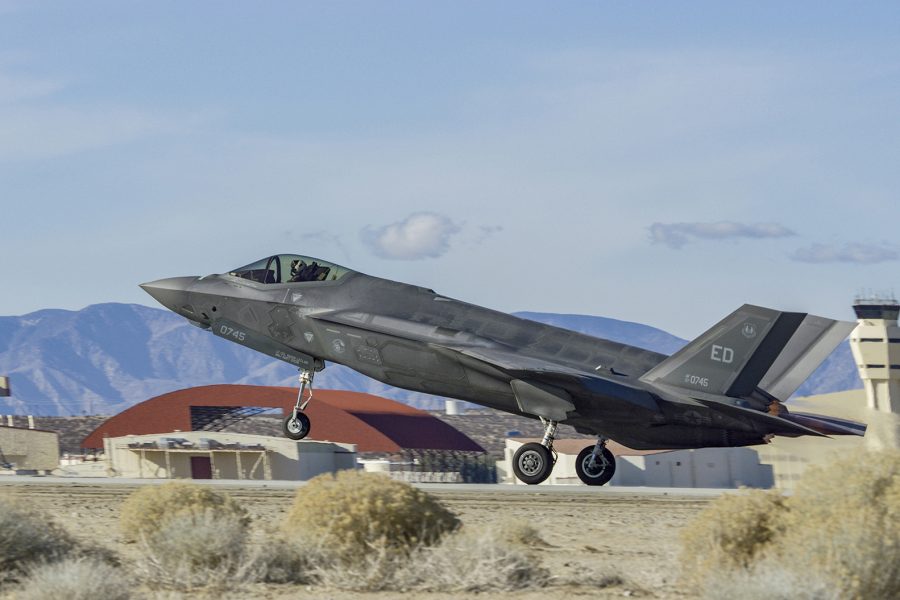Lt. Gen. Michael J. Schmidt, F-35 program executive officer, has approved use of “truncated” Tech Refresh 3 software, clearing the way for deliveries of more than 90 F-35s sitting in storage to U.S. military services and foreign users, the Joint Program Office announced July 11.
Schmidt approved the move July 3. The JPO said Schmidt took the action “after extensive coordination with the services, Joint Strike Fighter Executive Steering Board, pilots, maintainers, and industry.”
Deliveries of the F-35 have been on pause for a year now, as the TR-3 software—meant to underpin a host of Block 4 improvements to the jet—remains in flight testing. The jets in storage were built with TR-3 processors and other hardware.
A few months ago, manufacturer Lockheed Martin and the JPO agreed to accept a “truncated” version of TR-3 to get deliveries going again. The F-35 steering group—comprised of partners and users of the multiservice, multinational fighter—approved the plan to release jets with an incomplete TR-3 software package.
Yet Schmidt had been waiting for clear evidence that the truncated software is stable and safe for flight. Test pilots reported as recently as May that the software was still unstable and required in-flight rebooting multiple times per sortie.
Schmidt’s action means Lockheed Martin can resume deliveries of the F-35s as early as July 11, government sources said. The JPO is expected to issue a statement when the first aircraft is delivered and accepted, a process named for the associated Defense Contract Management Agency form, the DD-250. This will happen in “the near future,” the JPO said in a brief press statement.
Lockheed has said it can deliver the F-35s at the rate of one plane per day, but the Government Accountability Office recently pointed out that the company has never before achieved that rate. Even if that rate is achieved, it will take more than a year to catch up on deliveries to where all stored aircraft have been handed over to their users. Complicating the math is the fact that F-35s are still being produced, requiring faster delivery than production. Lockheed has a goal to deliver 156 F-35s per year by 2025.
The hold on deliveries has thwarted absorption plans at user squadrons worldwide, disrupting the training of pilots and maintainers and delaying the divestment or retirement of older fighters, such as the F-16.
Denmark recently recalled F-35s it had stationed at Luke Air Force Base, Ariz., in order to facilitate pilot and maintainer training at its domestic F-35 unit.
The TR-3 package of powerful new processors, displays and software is the basis for the Block 4 upgrade of the F-35 fleet; the configuration the Air Force has been waiting on to amp up its purchases of the fighter. However, delays in testing and development of some new capabilities prompted Schmidt to tell Congress this spring that the Block 4 will be “reimagined,” with some new features not coming until the 2030s.
Although neither Lockheed nor the JPO will discuss where the F-35s are being stored due to operational security, sources said the majority are parked at facilities near the company’s Fort Worth, Texas, manufacturing plant. The jets are still technically “owned” by Lockheed until they are delivered, but the DCMA has suggested the company’s liability for damage during the long storage period may be limited.
Lockheed has declined to disclose how the fighters have been stored; whether they’ve had their openings sealed to prevent intrusion of pests—akin to what is done with jets in long-term storage at the “Boneyard” at Davis-Monthan Air Force Base, Ariz.—or whether they are put in hangars to prevent weather damage, and whether they are occasionally run to lubricate their systems.


